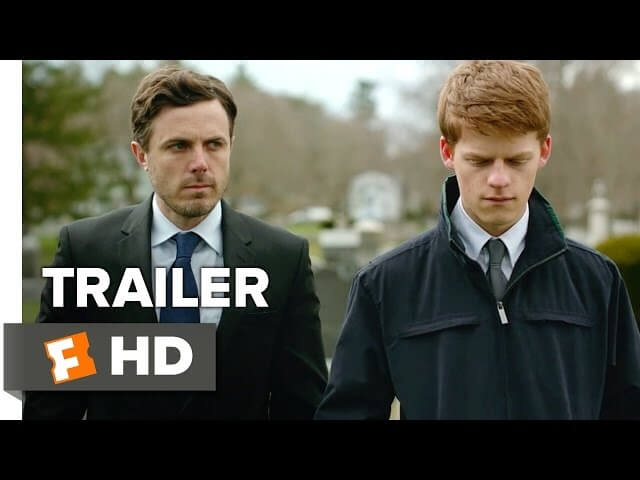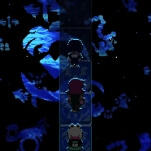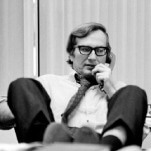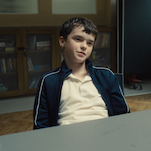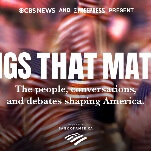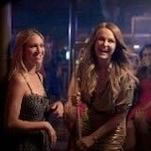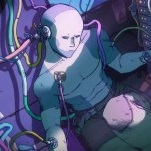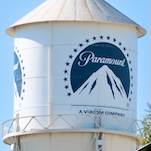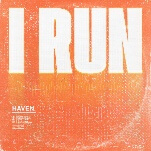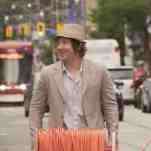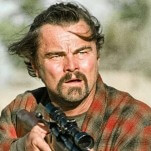AVC: You have such a knack for writing teenagers—everyone from Lisa in Margaret to the slightly older kids of the play This Is Our Youth. How do you get into that mind-set? What draws you to it?
KL: I really don’t know. I just remember it so vividly. I remember the kind of teenager I was, the kind of teenager I wanted to be, and then the kind of teenagers that were all around me. Life is lived on such a big scale in those years and such an embarrassing one as well. Everyone has such strong opinions, and everyone changes the way they are and who they are every six months, if not more rapidly than that. And there’s something really funny to me about it and also very touching and interesting.
AVC: What category does Patrick fall into as far as kids who you knew, kids who you wanted to be, kids who you were?
KL: Well, there’s also kids who I was just nothing like, who I was interested in, too, and I think he’s more like that. I wouldn’t have wanted to be a hockey-playing brawler, but I would have loved to have had two girlfriends. I didn’t have any girlfriends, so two would have been great. He’s with one girl who he really wants to be with who is not quite available, and then he has this girlfriend who he is with who is sort of a drip. And not to insult her—well, let’s say she’s a very uncomfortable person, and she’s very self-conscious and makes him self-conscious and sentimentalizes something that is really serious and is not actually that much of a companion for him. But I really actually feel bad for that character that Kara Hayward plays, but she’s not someone you want in the house when your father has just died. She doesn’t know how to handle it in a natural way. Maybe a lot of people don’t. But when that kind of thing happens to you, you want someone around who is going to really be capable of being present and not making everyone feel awkward and weird and sentimentalizing things. So, in a sense, he’s got a girlfriend that’s not really great for him, and Casey’s character helps facilitate him moving from her to this girl who actually is really nice, who he has a really good, sparring relationship with, who is sort of a challenge for him and not an embarrassing emotional compromise.
AVC: In This Is Our Youth, you have very specific stage directions on how overlapping dialogue should be delivered. What is it like putting that on screen, and what are the challenges associated with filming that?
KL: They’re not as manifest as you might think. The sound people usually are worried that they’re not going to be able to record the dialogue cleanly when both people are talking at once. You usually do one take where one person pretends the other one is talking, but you record them separately so you have the dialogue to work with later in the editing room if you need it, you know, clean and not overlapped. But for the most part, all through the films I’ve done, the overlaps have not been that hard to navigate around when you’re in the editing room. It’s only a technical challenge in the sound and the editing, really. For the actors, I think they enjoy it, and it’s fun. I think it’s hard to learn sometimes, but I’ve always been fortunate enough to have actors who are very game to learn it.
AVC: What was it like bringing Casey and Lucas together and seeing that relationship develop between them, as actors and on screen?
KL: Very gratifying. Casey is a very, very warm person and very generous and very kind. Very committed to being generous and kind, but he’s also playing a character who does not want to engage. So he has to be that guy a little bit in between takes. You can’t just turn it off and on. It’s hard enough to become that guy without having to be all cheerful and normal when the camera’s not rolling and then suddenly jump into it when the camera is rolling. So I think it was a bit of a challenge for him. Lucas has said, which I think is interesting, that he was intimidated by Casey when he first got there, and he was so eager to please him and make an impression on him that it actually helped the scenes a lot. Very often what will happen between actors is that they’ll develop kind of a ghost relationship in real life that reflects their relationship on screen or in the play that they’re doing. In fact, I’d say that happens almost every time. I don’t know why that happens, but it seems very common.
I know there are some actors who won’t switch their accents off when they’re on set and like to be called by their character’s names. That works for them, and that’s great. Casey’s not in that category, but he and most actors I know, tend to gravitate towards their character’s personalities. And the bigger relationships on the set or in the fiction tend to be recreated to some degree in real life. And I think that was true with Casey and Lucas, especially a lot of the warmth and affection that went on between them. I think Casey was kind but a little distant, and Lucas was eagerly trying to get in with him, buddy up with him. Casey was also very, very supportive and helpful to Lucas. It was really great listening to them on the walkie-talkie in the car between takes. I think they had a very good relationship, and they came to love and respect each other quite a lot.
AVC: You use parts of Handel’s Messiah in the film. What was the significance of that for you?
KL: It’s just one of my favorite pieces of music. It’s three hours of music, and it’s pretty much everything you could think of in that oratorio. It’s one of my go-to pieces of music when I’m looking around for music that might work for a movie. I tend to just start with things that I like, and there’s a lot of music that I’m, like, dying for a chance to put in a movie because I like it so much. The Messiah absolutely qualifies. So you know, the two pieces that are from the Messiah that are in there are two of my very favorites: the pastoral symphony [“Pifa”] in the middle of it and then the “He Shall Feed His Flock,” which is just insanely beautiful. You’re hoping it’s going to work, and you put in other pieces that you love, and they don’t really work. I put those two in, and it felt, basically, very right. I was a little worried about it because people have associations with classical music that I don’t share. But I wanted to make sure it fit and made sense and not just because of my personal tastes. But in the end, my personal taste is all I have to go by.
AVC: How did you think about building up to the revelation of what happened in Lee’s past? Why did you want it to come at that point in the film?
KL: At that point, I knew what the story was, and I knew what the past story was, and I knew where the story was going. You’re just feeling your way through it and writing down scenes that seem right. Then if it feels wrong, you pay attention to that instinct and change it. That flashback structure was essential in my being able to finish the script or write the script. It really gave me the whole movie in a sense, because this is someone who is carrying those memories around with them all the time. Of course, as soon as he gets back home, they are irrepressible and they just flood him, and that’s why he can’t stand to be there. It’s also who he is now. They’re just inseparable, not only from the structure, but from the emotional content of the movie and from his character. So they’re doing a lot of work for the movie. It was a lot of moving around of the parts when I was writing the script, where they should come and which one should come at which point. I spent a lot of time moving around the big flashback. I didn’t know if it should all be in one piece or if it should be broken up. I could show you not drafts of scripts but drafts of that sequence. There are dozens of them. You keep moving them around until it feels like it’s right. Or until you feel like it’s not going to get any better.
AVC: Do moments like the one with the EMS employees come in the writing process or in the filming process? Where do you find them?
KL: That was just a happy accident. The EMS guys just had trouble with the stretcher, and I knew the minute it started happening that it was great. They had so much trouble that I asked them between takes if they wanted to practice for 10 minutes, and they said, “No, no, we got it now.” Then they did it again, and it took them twice as long. You can’t plan for those things, but I think you can be open to them and allow for them to happen and include them. A lot of things like that happened, big and small, that just add extra little touches of real life throughout the story. And eventually, they seep in and really become the foundation of the story. I don’t know how that works exactly, but I try to be kind of loose when I’m writing. And then I try to stick to the script when I’m shooting it but be open to these happy accidents. You know, we had a snowstorm in the middle of one day, and we just felt like we struck gold. So we just turned the camera around. There’s this great shot of the ocean, the waves just crashing in towards the camera and the birds all flying around in a panic and the boats all bobbing up and down in the harbor. And we just got that. We didn’t know it was going to snow. At first we were like, “Shit, we’ve got to stop shooting because it’s snowing.” And then we were like, “No. Now we can capture the snowstorm.”
AVC: Matt had the final cut on the film. What was your reaction to that? How did you feel about it being in Matt’s hands?
KL: Well, I wouldn’t have done it if he hadn’t had final cut, because I knew he would never use it, and it would be used to protect my final cut and that if there was any trouble—which I wasn’t anticipating—that the investors and the producers would feel confident that Matt was there. I felt confident and trusted that Matt was there. So to me, it was my protection. It wasn’t something that was taken away from me. It was something that was given to me for my own creative protection. Matt created a completely safe creative space for me to function in, and the other producers absolutely fell in line with, I think, greater confidence, possibly, than if I had had final cut. They probably would have been very nervous. And I probably would have had to deal with their nervousness in a way that just didn’t come up in this scenario. I would never do a movie without complete creative control, and if no one wants to give it to me, then it has to be given to someone whom I trust completely.
AVC: You’re a playwright, and you’re a filmmaker. Is there a difference in what you look at? Is Lee Chandler a character that could work on the stage? Do you look at why this works better as a film rather than on stage?
KL: I don’t think it could work as a stage play. I suppose it could, but you’d have to find a theatrical structure that would work, and I can’t think of one at the moment. There’s a lot of driving. There are a lot of exteriors. There’s a lot of moving around. There are a lot of practical things that are just beautifully expressed in film, like the whole thing with the boat. If you couldn’t see the boat or the boats in this story, I think you really lose something. There’s something about driving through these New England highways and parkways that is very hard to recreate in the theater. But I think that locations are so important and the sense of place is so important that it would be a real challenge to make this work as a theater piece.
